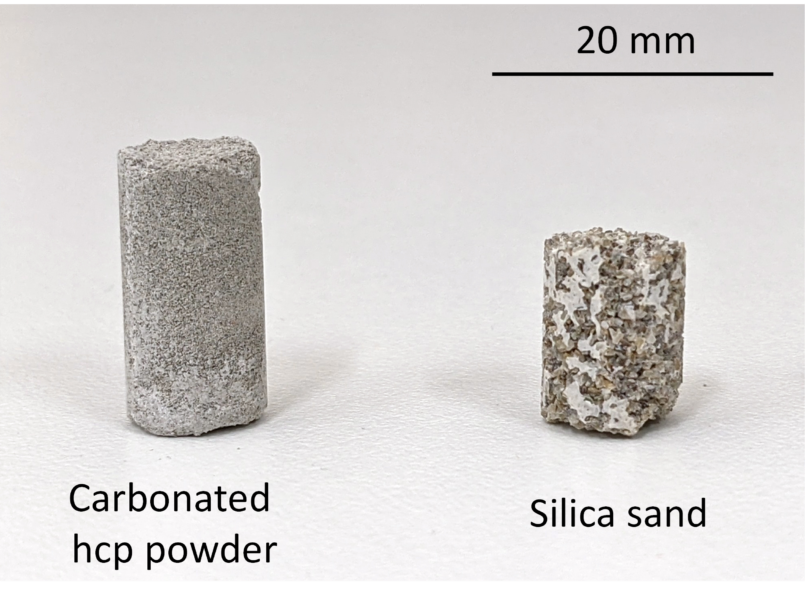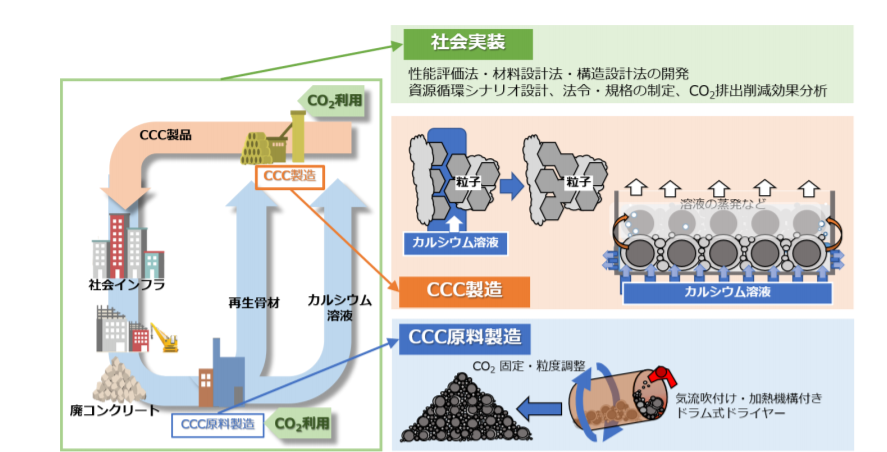

The University of Tokyo: New building materials from waste concrete and CO2: Calcium carbonate concrete
World CO2 emissions:
7% of the world’s carbon dioxide emissions come from cement manufacturing and use.
The main component of concrete is cement.
Concrete is very useful as a building material,
It will be needed in the future.
Cement manufacturing problems:
When cement is manufactured, CO2 is inevitably emitted in the process.
Reducing CO2 emissions has become a major issue in the construction industry.
Maruyama et al. Thinked, “On the contrary, could we make a concrete substitute by utilizing CO2 in the atmosphere?”
University of Tokyo Graduate School
Professor Ippei Maruyama
The research team at the University of Tokyo
To address environmental concerns
From waste concrete and CO2
Can manufacture new building materials,
We have developed a technology to reduce CO2.
Details of the study:
It was published in the scientific journal “Journal of Advanced Concrete Technology” dated October 8.
Gnathology
https://nazology.net/archives/97883
A concrete solution | A new kind of concrete could reduce emissions from the construction industry.
Calcium carbonate concrete
is made from waste concrete and carbon dioxide from the air or industrial exhaust gases.It shows promise as a future construction material, especially in places where natural resources are limited
A new way to reduce emissions levels caused by concrete use
has been proposed and proven to work by Professor Ippei Maruyama and C4S (Calcium Carbonate Circulation System for Construction) project manager Professor Takafumi Noguchi, both from the Department of Architecture at the University of Tokyo.
They have found a way
to take waste concrete and captured carbon dioxide, and combine them in a novel process into a usable form of concrete called calcium carbonate concrete.
Inspired by the way some aquatic organisms harden into fossils over time,
Maruyama wondered if the same process that forms hard calcium carbonate deposits from dead organic matter could be applied to concrete.
Calcium is essential for the reaction between cement and water to form concrete,
and Maruyama saw this as an opportunity to investigate a less carbon-intensive way of performing the same function.
The University of Tokyo
https://www.u-tokyo.ac.jp/focus/en/press/z0508_00190.html#
A New Concept of Calcium Carbonate Concrete using Demolished Concrete and CO2
https://www.jstage.jst.go.jp/article/jact/19/10/19_1052/_article